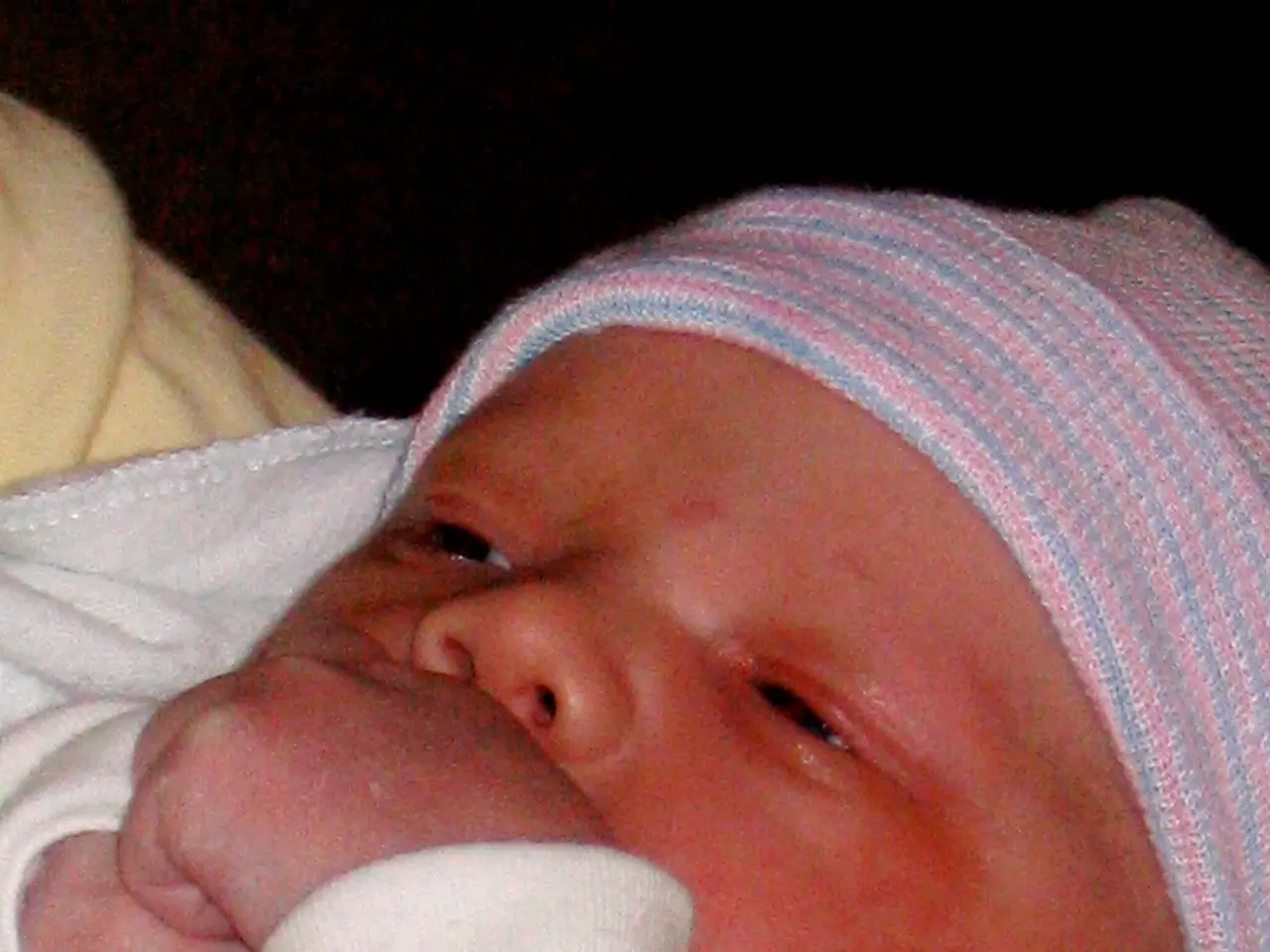Fetal Respiration Inside the Uterus: An Explanation
In the womb, a baby receives oxygen through a unique system that bypasses the lungs until birth. This process is facilitated by the placenta and the umbilical cord.
The umbilical cord, which connects the baby to the placenta, carries oxygen-rich blood from the mother. This blood enters the baby's circulation through the umbilical vein. The blood then flows to the liver and ductus venosus before reaching the heart, specifically the inferior vena cava and the foramen ovale[1][4]. From there, the oxygen is distributed throughout the fetal body.
A key component in this process is the ductus arteriosus, a fetal blood vessel that helps bypass the non-functioning fetal lungs by diverting blood away from them directly into the systemic circulation[4].
The lungs themselves are not used for oxygen exchange in the womb because the oxygen comes from the mother's blood via the placenta.
At birth, when the baby takes its first breaths, the placental circulation stops, and the lungs take over oxygen exchange[2].
It is important to note that babies can inhale meconium, a dark-green excretory substance, after birth, which can lead to severe respiratory problems. To prevent this, it is crucial to ensure that babies do not inhale meconium[3].
Mothers are advised to maintain a balanced diet and avoid toxins to ensure the health of their babies. Pregnancy can be challenging, but the baby obtains its requirements in a different way than adults[5].
Perinatal asphyxia, a condition caused by lack of oxygen during or immediately after birth, can lead to organ damage, brain damage, and other complications. Causes of perinatal asphyxia include altered blood supply through the umbilical cord, breech or upside-down position, shoulder dystocia, and umbilical cord wrapping around the neck during delivery[6].
Contrary to some beliefs, water birth does not affect the baby's breathing ability[7].
If you have concerns about the health of your unborn baby, it is always best to consult with a gynaecologist.
[1] Placenta and umbilical cord: https://www.ncbi.nlm.nih.gov/books/NBK532869/ [2] First breaths after birth: https://www.ncbi.nlm.nih.gov/pmc/articles/PMC2883757/ [3] Preventing babies from inhaling meconium: https://www.ncbi.nlm.nih.gov/pmc/articles/PMC4671636/ [4] Fetal circulation: https://www.ncbi.nlm.nih.gov/books/NBK532863/ [5] Nutrition during pregnancy: https://www.ncbi.nlm.nih.gov/books/NBK507829/ [6] Causes of perinatal asphyxia: https://www.ncbi.nlm.nih.gov/pmc/articles/PMC3726148/ [7] Water birth and baby's breathing ability: https://www.ncbi.nlm.nih.gov/pmc/articles/PMC3290858/
The unique system for oxygen delivery during pregnancy, facilitated by the placenta and umbilical cord, is a crucial component of fetal health-and-wellness. In this process, the oxygen-rich blood gets carried by the umbilical cord to the baby through the umbilical vein, bypassing the lungs until birth. Adequate parenting during this period involves the mother maintaining a balanced diet and avoiding toxins to ensure the health of her baby, as pregnancy requires different nutritional needs than adult life. To prevent severe respiratory problems for the newborn, it is vital to ensure that babies do not inhale meconium during birth.




